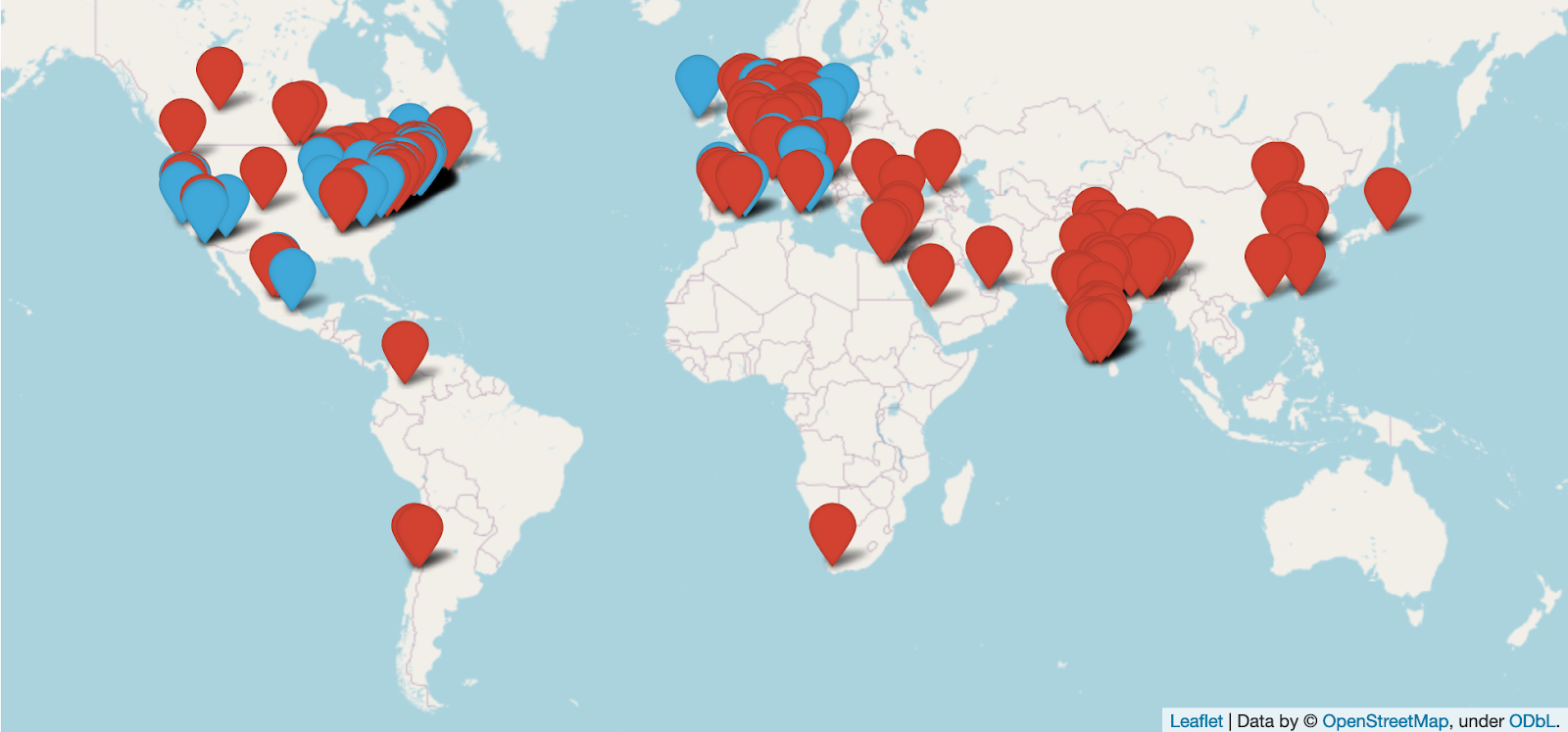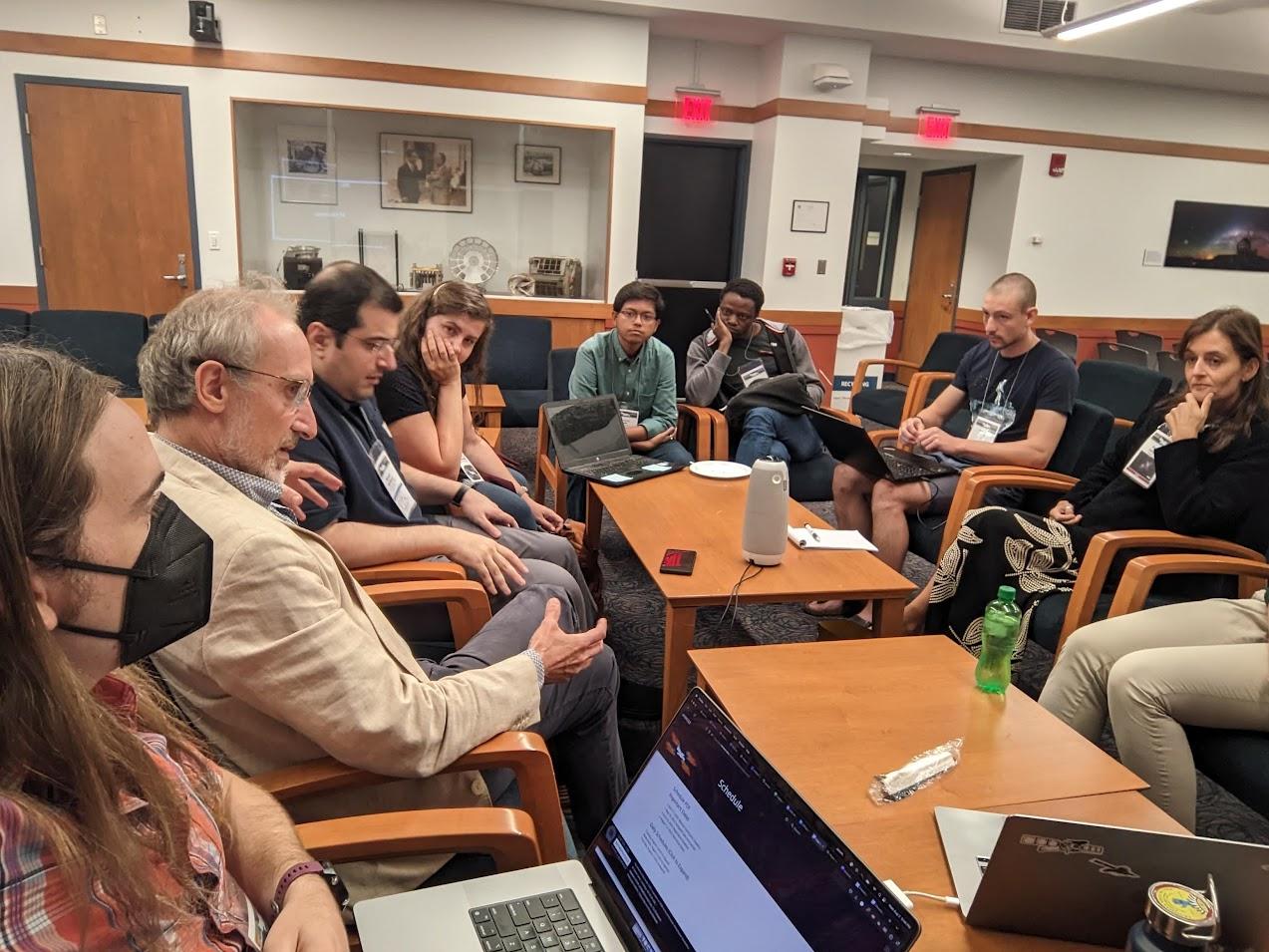Meeting Report: High-Resolution X-ray Spectroscopy
H. Moritz Günther, David Huenemoerder
This Summer’s Chandra workshop was held at MIT on Aug 1–3, with a focus on High Resolution X-ray Spectroscopy (HRXS). In spite of the MIT policy of "no food or drink in classrooms" (i.e., no coffee), most attendees managed to stay awake most of the time, due to the engaging subject matter. We encourage you to verify this for yourself, as all talks were recorded and are available at the conference website.
The workshop covered a broad range of topics, including the interstellar and circumgalactic media, stars, active galactic nuclei, X-ray binaries, cataclysmic variables, supernova remnants, and laboratory astrophysics. Talks featured high-resolution spectra not just from Chandra HETG and LETG, but also XMM-Newton RGS and Hitomi as well as anticipated insights from XRISM and to-be-proposed probe-class missions Arcus and LEM. At least one talk even went as far back as to discuss results from the Einstein crystal spectrometer!
At the last coffee break of the meeting we took the conference photo shown below. The diverse age range of attendees attests to vitality in the field: there were both veteran spectroscopists as well as junior researchers who will carry on with the new and planned missions.

In-person participants of the HRXS Workshop pose for a group photo in Marlar during the final afternoon coffee break.
Some things we had in this workshop
- We saw new data, as well as long-term projects (8 to 20 years of Chandra data) and new results from archival data, such as precision velocity measurements in stars and long-term variability studies.
- We were treated to some "ninja"-level analyses of complicated datasets, such as very extended sources (supernova remnants) and very crowded fields (Orion Nebula Cluster) observed with HETG.
- We heard about interest in support for non-standard Chandra modes, which can help mitigate growing contamination on ACIS (e.g., HETG with HRC-I).
- We saw some new methods and tools for data analysis, such as the use of neural networks, new statistics, and interactive "cavity detection."
- There were good examples of global fitting, but also of narrow focuses on specific spectral diagnostics that could be lost in global fits, such as DR-lines or one weak but highly significant nitrogen line.
- There were many joint uses of high-resolution spectra with context provided by low resolution instruments (XMM-Newton EPIC/PN, Swift, NuSTAR, MAXI, ROSAT, ASCA).
- We saw a retrospective on how the Chandra HETG came to be, given by one of the main players: Claude Canizares. This talk is available on YouTube.
Brain-storming the "legacy of Chandra"
On the second day of the workshop we had "brain-storming" sessions in small groups, focused on Diffuse matter and Galaxies, Stars, AGN, and Atomic Data. These sessions were open-ended discussion of needs, priorities (e.g. "What would you do with 5 Ms of Chandra data?"), or issues across a number of areas, much of it summarized on the last day. Some main themes are:
- We absolutely need to take advantage of the high spatial and spectral resolution of Chandra as long as we have it.
- There is a need for calibration of HETG with HRC (since ACIS contamination makes spectroscopy of soft X-rays difficult now).
- Now that ACIS is so contaminated, we need to embrace HRC for soft targets.
- We need much deeper exposures for gratings, but it’s hard to get a 300 ks exposure through a panel that might only have 800 ks to give out in total. While the rate of acceptance for grating proposals statistically is the same as for imaging proposals, that’s because we self-censor. For a grating proposal, we only invest the time in writing it if it is absolutely superb.
- TOOs are important, and specific setups are needed to do them justice in the review panels. Many of the bright sources on the sky have already been observed while TOOs are, by definition, new. TOOs are hard for mission planning to handle (high resource cost), but there is significant discovery space there that might warrant extra resources, even if that negatively impacts other parts of the program.
The last two points are suggestions to discuss for the Chandra director!
Some things we did not have at this workshop
- No fights or heated arguments (despite repeated baiting by one attendee regarding resonant scattering into the beam, as well as out of it). It was a friendly/polite/civil crowd.
- No general gripes about inadequate atomic data (e.g., "I can’t fit my perfect models without you providing Fe-like uranium emissivities…"). Definite atomic data needs were expressed (e.g., for charge exchange data, funding for work, people to do the work), but, in general, infrastructure from data to databases to analysis seems to work.
- Little to no talks on exoplanets, except in passing as being blasted by X-ray irradiation or swallowed by compact objects.
- We did not learn how Claude Canizares avoided jail time after the machine to manufacture the HETG grating facets—that NASA had paid for—was never delivered.
The future
Looking to the future, we had proponents of the upcoming missions (or concepts) present their visions for XRISM, Athena, LEM, Arcus, and HUBS. This provided much interest and discussion on instrumental capabilities desired, the importance of different scientific programs, and the realities of logistical constraints (time, budget, politics).
Meeting format, organization, and implementation
"This is the first Zoom meeting I actually enjoyed." — Ehud Behar
We decided early on that this meeting should be held in hybrid mode. We want to discuss here what exactly we did to make the meeting a hybrid success, because hybrid meetings are still relatively new to the astronomical community and we are all still figuring out how to do that right.
On the one hand, many people like the in-person interactions, the informal discussions during coffee or lunch that could not be pre-planned, and the meeting of old friends that are enabled by physical presence at meetings. On the other hand, remote meetings have many undeniable advantages, too. They allow people to attend who cannot travel to Cambridge, MA (or wherever the meeting is being held) because of visa issues, because they care for elderly family members or children, because they don’t have the travel funding, because they don’t want to spend many hours on international flights for just three days of meeting, or because they want to reduce the CO2 footprint of astronomy (online meetings emit about three to four orders of magnitude less CO2 per average participant than in-person meetings). We had about 65 in-person registrations and 150 remote registrations at this meeting; a look at the map embedded below shows that the remote option made this meeting accessible to large parts of the world that otherwise (based on experience in previous workshops) would not have traveled to Cambridge.

Blue: participant registered in-person, red: remote. Locations are taken from participants' affiliation or top level domain of their email address and randomized by +/- 1 degree to reduce overlap of markers.
Neither in-person nor virtual participants attended all sessions; a typical session had about 30–40 people in the audience and 30–40 people on zoom.
The SOC and LOC worked together to have good interactions between in-person and remote participants. Instead of paper posters, we had 3-min flash talks fully integrated into the program; we had both contributed and invited talks in-person and remote; and we organized a discussion section on the "Legacy of Chandra" in a manner that included both sets of attendees. For this section, attendees suggested the topics to discuss and we set up three separate zoom rooms with A/V equipment; remote attendees reported that they felt fully integrated in the discussion. All of this was possible because we (the LOC) chose to use rooms at MIT, where many of us work and where we know the rooms and equipment well.
Also, we decided to run all A/V equipment ourselves and not pay professional A/V services. It required several practice sessions to figure out the setup, but it allowed us to keep registration fees very low—also an important consideration to make the workshop accessible to all interested researchers.
We thank the SOC and LOC for an efficiently run and productive meeting. And we thank the MIT/MKI administrative staff for their fantastic help with setup and cleanup every day of the meeting.
Main regrets
Although the workshop was otherwise a success, we do have one regret. We had our lunch and coffee breaks in MIT’s Marlar lounge. In there—just a few feet away from the cookies and on display in a glass case—sits an engineering model of ACIS. Some participants might have seen it, but maybe we should have pointed it out to everyone? Consider it a treasure hunt…

